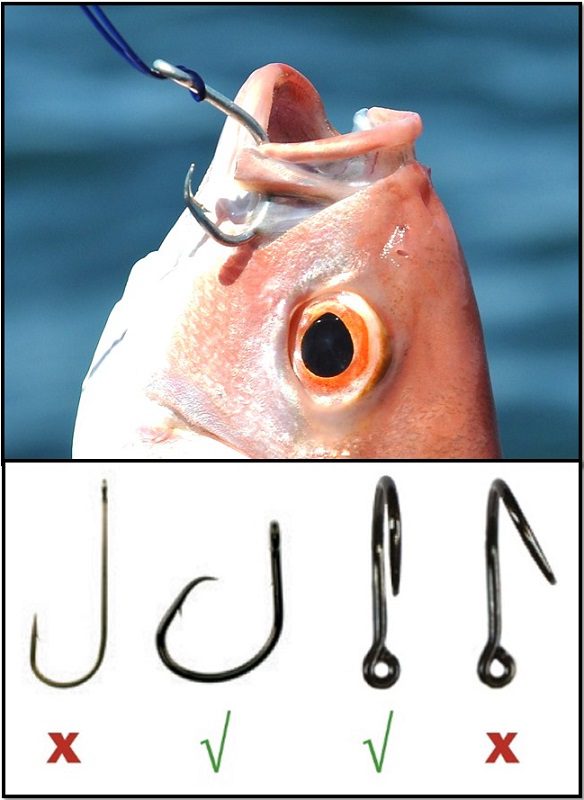
Circle hooks are designed so the point is turned perpendicular to the shank to form a circular or oval shape. They are best used with natural bait (live or dead) and are 90% more likely to hook fish in the mouth instead of in the esophagus or stomach. Hooking a fish in the mouth reduces internal harm, decreases dehooking time, and lessens the chances of the angler needing to leave the hook in the fish. Fish hooked in the corner of the mouth also tend to fight less than fish that are hooked in the gut. It is best to use non-stainless-steel and non-offset circle hooks.
If a fish is hooked deep in the throat or gut, research has shown that it is best to cut the leader as close to the hook as possible and leave the hook in the fish. Prolonged attempts to remove the hook often do more harm than good.
Circle Hook Tips! Try fishing with barbless hooks or crimp the barb down. Catch rates using barbed versus barbless hooks are not significantly different, but the advantage of using barbless hooks is that they are easier to remove from a fish or yourself! Also remember to not “set” the circle hook. After the fish takes the bait, allow the fish to run and then proceed to reel it in. Watch this video to learn more about circle hooks.